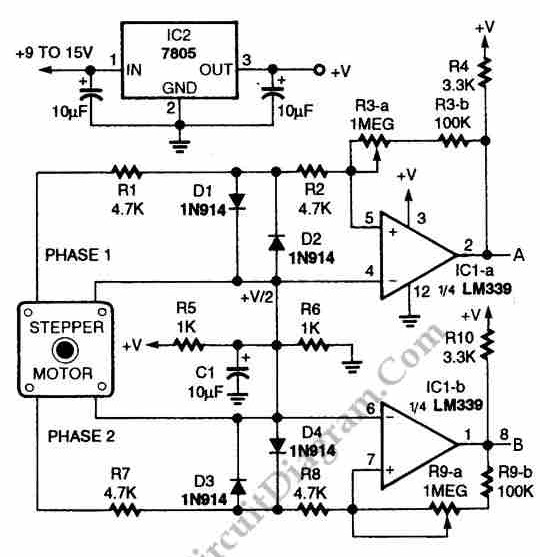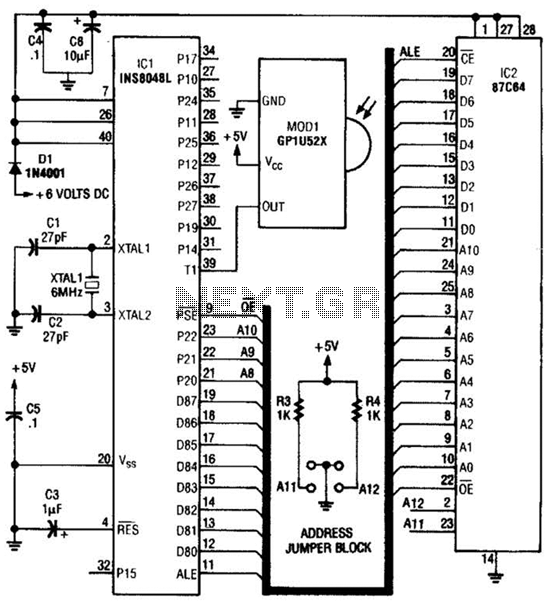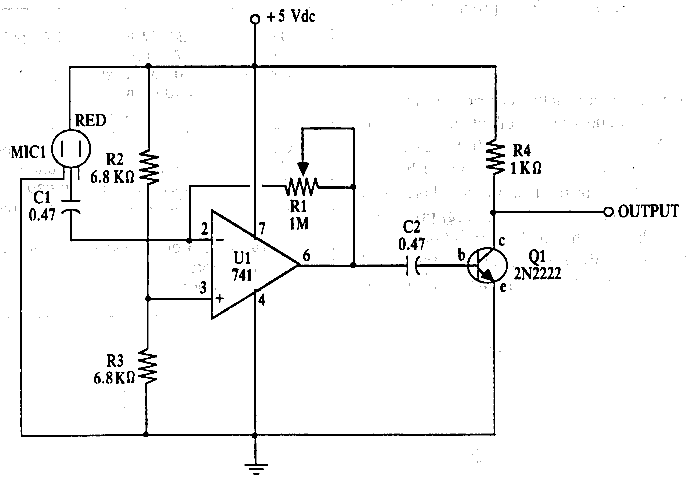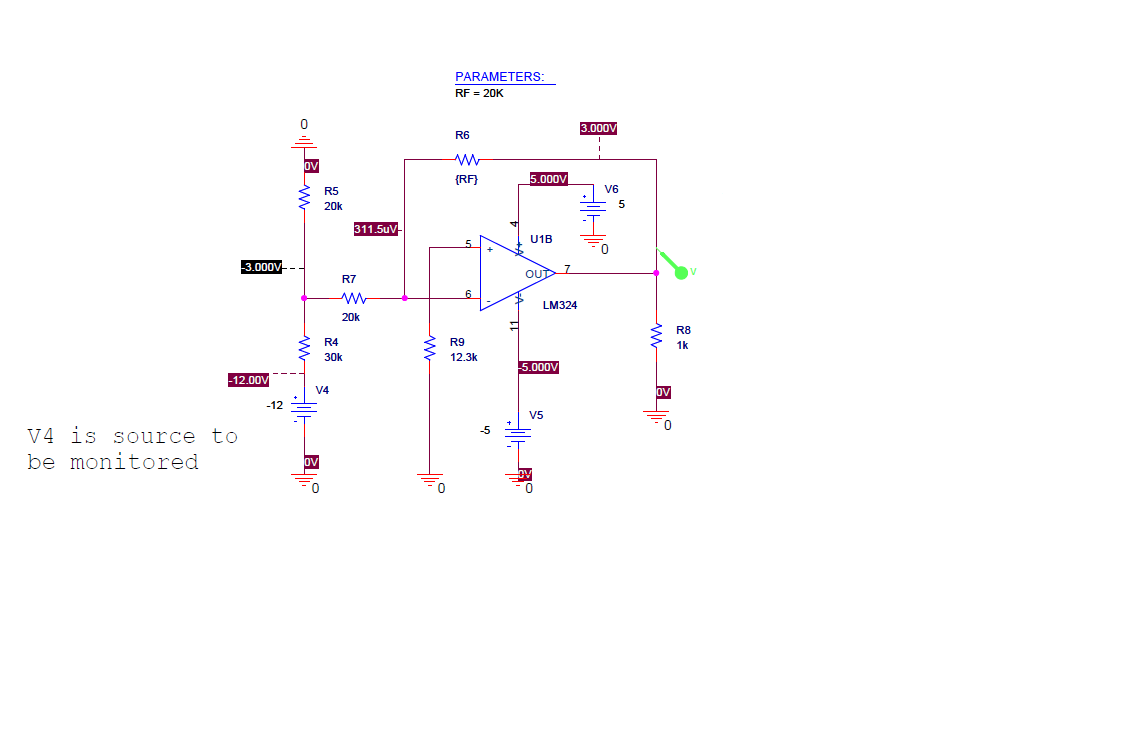
One of the battery discharge protection circuit
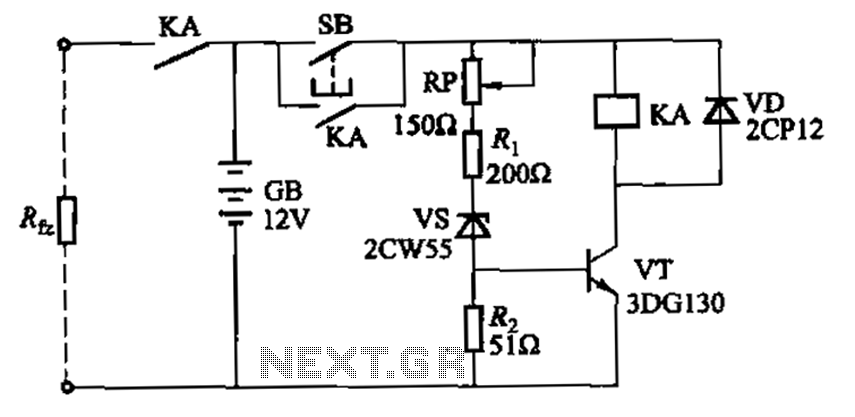
Deep discharge of a battery can lead to plate curing, which shortens the battery's lifespan. To prevent this, a discharge protection device can be implemented. The circuit diagram illustrates this mechanism. When the battery voltage falls to a predetermined value (which can be adjusted using the potentiometer RP to modify the threshold), relay KA is activated, disconnecting the load circuit and halting the battery's discharge.
The described circuit serves as a protective measure for batteries, particularly in applications where deep discharge could result in irreversible damage. The core component of the circuit is the relay (KA), which functions as a switch to cut off the load when the battery voltage reaches a critical low level.
The voltage sensing is achieved through a voltage divider configuration that includes the potentiometer (RP). By adjusting RP, the user can set the specific voltage threshold at which the relay will activate. This allows for flexibility in protecting various types of batteries, as different battery chemistries have different voltage limits for safe operation.
When the voltage drops to the set threshold, the relay coil is energized, causing the relay contacts to open. This interrupts the current flow to the load, effectively preventing further discharge of the battery. The circuit may also include additional components such as a diode across the relay coil to prevent back EMF from damaging other circuit elements when the relay is deactivated.
Furthermore, the design can be enhanced by incorporating an LED indicator that illuminates when the relay is engaged, providing a visual cue that the battery is in a protected state. Additional capacitors may be included to filter voltage spikes and ensure stable operation of the relay.
In summary, this circuit effectively safeguards against deep discharge, extending the operational life of the battery while allowing for user-defined settings through the adjustable potentiometer. Proper implementation of this protective circuit is crucial in battery management systems, particularly in renewable energy applications and portable electronic devices. Battery deep discharge would plate curing, shortening the battery life. This could be set discharge protection device. Circuit is shown. When the battery voltage drops to the t ermination value (by the potentiometer RP to change the operation of the threshold value), relay KA release, cut off the load circuit, so that the battery stops discharging.
The described circuit serves as a protective measure for batteries, particularly in applications where deep discharge could result in irreversible damage. The core component of the circuit is the relay (KA), which functions as a switch to cut off the load when the battery voltage reaches a critical low level.
The voltage sensing is achieved through a voltage divider configuration that includes the potentiometer (RP). By adjusting RP, the user can set the specific voltage threshold at which the relay will activate. This allows for flexibility in protecting various types of batteries, as different battery chemistries have different voltage limits for safe operation.
When the voltage drops to the set threshold, the relay coil is energized, causing the relay contacts to open. This interrupts the current flow to the load, effectively preventing further discharge of the battery. The circuit may also include additional components such as a diode across the relay coil to prevent back EMF from damaging other circuit elements when the relay is deactivated.
Furthermore, the design can be enhanced by incorporating an LED indicator that illuminates when the relay is engaged, providing a visual cue that the battery is in a protected state. Additional capacitors may be included to filter voltage spikes and ensure stable operation of the relay.
In summary, this circuit effectively safeguards against deep discharge, extending the operational life of the battery while allowing for user-defined settings through the adjustable potentiometer. Proper implementation of this protective circuit is crucial in battery management systems, particularly in renewable energy applications and portable electronic devices. Battery deep discharge would plate curing, shortening the battery life. This could be set discharge protection device. Circuit is shown. When the battery voltage drops to the t ermination value (by the potentiometer RP to change the operation of the threshold value), relay KA release, cut off the load circuit, so that the battery stops discharging.
